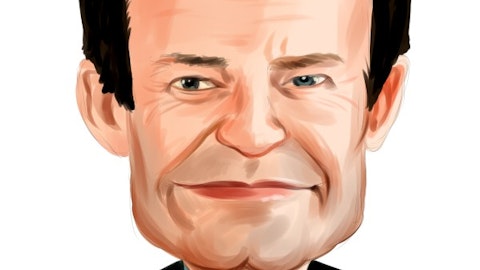Aaron Deer: Hey, David, this is Aaron. Yes, the mock conversions went very well. Of course, there’s always some lessons learned and we’re figuring out ways we can make sure we do things better. But we’re having a tremendous amount of client communication right now that’s going out to make sure that when we do get to the actual conversion that it goes as absolutely smoothly as possible and we want it to be a seamless and experience for the customer and for our associates as possible. So, we’re spending a lot of time there. IMO, obviously, is leading that effort. And as we’ve gone through this, we’ve had a principle of not introducing new risk to any of this process. So, we haven’t necessarily been actively looking to build in new products as part of this process.
Certainly, we’re continuously looking at the competitive environment and speaking to our clients about what their needs are and making sure that we’re staying ahead of that and anticipating that. And so, there are things that we will be looking to do in the year ahead to make sure that all of our treasury management capabilities continue to be a leading edge, but there’s nothing that we’re trying to implement through the integration process.
Clint Stein: The one thing I’ll add to that is we’ve spent a lot of time over the past 15 months talking about the complementary nature of Columbia’s business activities and Umpqua’s business activities. So, we think that there’s a lot of opportunity for upside with existing capabilities between the two organizations. So, for example, our healthcare book leveraging impacts capabilities, some of those types of things. Umpqua has got a more sophisticated and broader product set on the treasury management side that existing Columbia customers will instantly get the benefit of those expanded offerings. So, I do think that there’s plenty of opportunities already existing. And then, to Aaron’s point, try to minimize the number of moving parts as — to the extent, we can at these critical moments of conversion and integration.
But with the conversion scheduled shortly after we close, I think we’ll be able to quickly pivot in the back half of the year towards looking at, are there things that have emerged that neither bank has that we think long-term would give us an advantage. And so, I think it will be a quick turn, but I think we’re set up very, very well day one to meet — not only meet the needs, but exceed the needs of most of our customers and continue to grow with them.
David Feaster: That’s great color. Thanks. We’re excited to see what 2023 has got in store for you all. Thanks.
Operator: And thank you. And our next question comes from Jeff Rulis from D.A. Davidson. Your line is now open.
Jeff Rulis: Hi, good morning.
Clint Stein: Good afternoon, Jeff.
Jeff Rulis: Just wanted to narrow in on the — maybe if I could, the core noninterest expense and fee income lines. I got it around 96 in, call it, ’23, ’24. So, I wanted to first see if those numbers align with what your thoughts are on core? And then, if you have any thoughts about how that transitions outside of seasonal influences, but look at for kind of growth rates for the year? Thank you.
Aaron Deer: Yes, Jeff, those are pretty close. If you want, I can give you the specifics behind the underlying merger costs in terms of what lines those hit, if that’s helpful to you. But I think I would echo the comments that Ron made on the earlier Umpqua call in terms of expectations for first quarter typically you’re going to see an uptick in expenses related to FICA and that sort of thing. And then, shortly after that, you get the kind of annual merit increase impact. But a lot of those seasonal costs that hit in the first quarter then trail off through the year. So, I don’t think you’re going to see anything outsized or abnormal related to that, of course, the exception of our two institutions coming together. So




